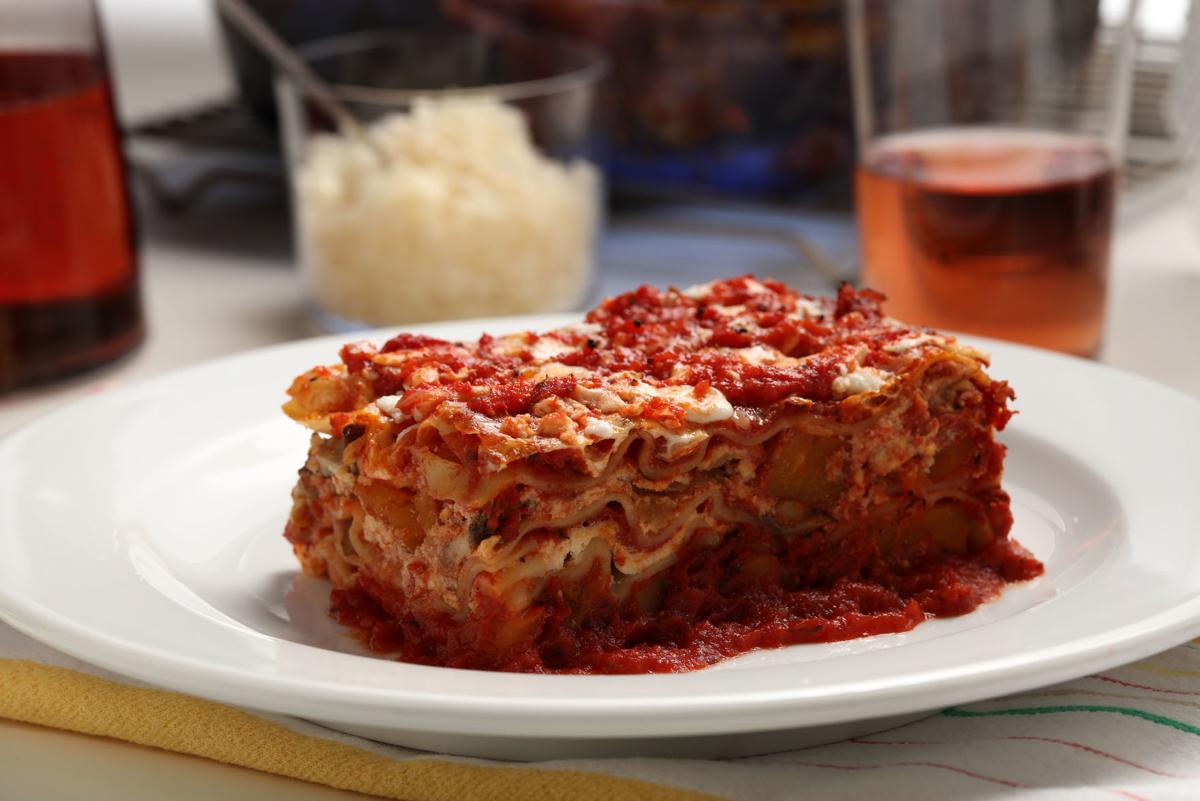A piping hot pan of lasagna takes the chill out of January. I fantasize about popping a tray of multi-layered goodness into a hot oven after an afternoon of cross-country skiing.
Sure, there are those of us on January diets (when are we ever not on a diet?), but lasagna needn’t be the gut bomb of its reputation. In fact, eaten in the appropriate portions (now, that’s the trick to everything), the dish proves ultimately satisfying. It’s perfectly delicious when meatless, vegetable-forward and moderate on dairy.
These days I make two smaller pans, each 8 or 9 inches square, rather than one 13-by-9-inch pan. That way, I have one to serve and one to freeze for later. The square pan makes 6 moderate-size pieces suitable for a main course. Leftovers reheat well.
On a recent visit to Giant restaurant in Chicago, the server bragged that the lasagna had more than 20 layers. It stood shy of 3 inches tall and tasted incredibly light and delicious. It contained just enough cheese to hold it all together, and the sauce had deep, rich tomato flavor. The pasta layers, as thin as paper, nearly melted.
This led me to think about the noodles I’ve been using. Store-bought lasagna noodles with the ruffled edge are simply too thick; they yield a pasta-heavy dish. Plus, boiling them makes extra work.
For a many-layered lasagna, I use the thinnest sheets of pasta I can find, such as the fresh lasagna noodles from the local Italian market. They are thin and moist, so no need to boil; they’ll be pleasantly al dente in the finished dish.
My second choice — very nearly as good — is no-boil pasta sheets found in the dried pasta aisle of most supermarkets. These thin, somewhat translucent, sheets soften perfectly from the moisture of the sauce and remain toothsome in the final dish. The only caution is to be sure they are coated with sauce to prevent dryness.
The no-boil sheets fit an 8-inch square baking pan beautifully. If you use a 9-inch pan there will be some edges not covered with pasta — no worries, the pasta expands as it absorbs moisture. Disposable foil pans come in handy when bringing the lasagna to parties.
Assembling lasagna does take time, but the ingredients are easy to procure and to handle. For the recipes that follow, the components are simply a quick-cooking sauce, pasta, ricotta mixture and shredded cheese. A spinach or mushroom layer is nice but optional.
You’ll vastly improve your finished dish if you take the time to shred the mozzarella. The anti-caking agents in pre-shredded cheese keep it from melting nicely. Whole milk mozzarella and whole milk ricotta yield superior mouthfeel and milky goodness. Choose real Parmesan shreds or flakes for the best cheese flavor and appearance.
The following meatless lasagna is a touch sweet, with butternut added to the sauce; a layer of sauteed mushrooms adds texture. For meat lovers, choose the sausage-laced sauce version. Either way, each lasagna boasts 17 layers (most of them from the tomato sauce). You will have bragging rights.
IMPORTANT TIPS
After wrapping the pans for freezing, use a permanent marker to write the baking directions on the foil. I also put a separate note on the pan to remind me to remove the plastic layer before popping them into the oven.
Always thaw the lasagna in the refrigerator, not at room temperature.
